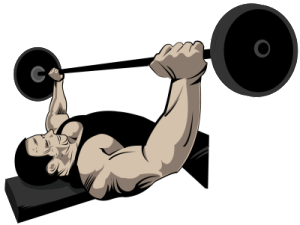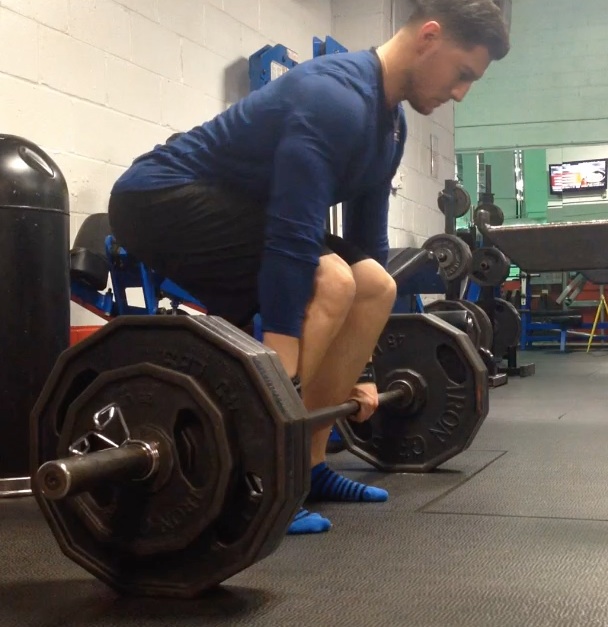
Become Strong & Flexible From Lifting Weights
August 24, 2014 // Fitness
Compound barbell movements are strength exercises. These exercises are designed to build strength in your muscles, ligaments, tendons, and supporting structures. Utilizing the full range of motion of your joints will give you the most strength and increase your flexibility, but what happens when you can’t go “all the way” through the range? We have a weight lifting technique to fix that.
When it comes to true strength training, load is the basic measure of progress. Your mechanics and technique are variables for you to manage, strategize, and manipulate, but ultimately your goal is to lift more weight. To move the maximum amount of weight, you need to utilize the full range of motion [ROM] within the lift. Full ROM requires optimal tendon, ligament, and muscular strength. The common theme of gym-goers is to work within the range of motion they’re comfortable in. Not only is this counter-productive, this self-determined ROM strategy has an incredibly high risk of injury. The load (weight) of the strength lift is supposed to move evenly throughout the motion. Shortening the range of motion of a lift places unnecessary forces on the joint(s) involved in the lift. This leads to decreased neuromuscular activity of the particular muscles in the lift and creates a strength imbalance, developing the dreaded sticking point.
Blast Through Sticking Points
Have you ever tried to lift a weight and gotten stuck at a certain point? This is called a Sticking Point and can be a major pain in the tail to overcome. Sticking points are the point that power and strength decrease at a certain range or angle in a lift.
Sticking points suck. We’ve all been there and tried working through them. Many strategies help fix this strength imbalance, but none have been quite as effective as a little underground training called Dead-Stop Training.
From someone who used to lift in a self-determined ROM and eventually tore the labrum of my shoulder, I have experienced the effectiveness of Dead Stop Training during my re-entry into strength training. Not only is all my pain gone, I am lifting substantially more weight than ever throughout a full ROM.
Dead-Stop Training eliminates the sticking point.
Dead-Stop Training builds barbell strength.
Dead-Stop Training works.
How It Works
DST activates the central nervous system, recruits fast-twitch fibers, and builds the supporting/stabilizing areas around a joint, which are vastly underutilized in a lift. DST is great way to prepare your nervous system for hypertrophy (muscle building) training. It’s also an invaluable strategy for building your confidence and strength in the tough lifts.
When you perform a barbell compound lift, such as a Military Press, normally you would press and lower the bar continuously. With dead-stop training, you add a pause between each repetition. That’s right, STOP. Dead-Stop. Keeping the tension tight on the bar, add a momentary pause so you can learn to explode from the full stretched position. When you go into your next rep, press (or pull) the hell out of the bar.
It’s that simple.
Here are some examples of Dead-Stop Training performed by myself and trainer Joe Hannon:
https://www.youtube.com/watch?v=XhAnDMpAYjc
https://www.youtube.com/watch?v=D1cB-_83cxM
https://www.youtube.com/watch?v=EX8pDC-nK8Y
https://www.youtube.com/watch?v=hSZcTWuESKQ
https://www.youtube.com/watch?v=HZ5k22BqBpw
https://www.youtube.com/watch?v=6HKa_l5smGg
How To Train With DST
-
Determine the muscle group(s) of your workout
-
Pick one of the compound barbell lifts that involve the above muscle group(s)
-
Do this lift first in your workout
-
Ramp up the weight until you reach 90% of your 1RM
-
Stick with low volume (1-3 reps) for multiple working sets (4-6)
Example:
Military Press on Shoulder Day
[Ramp-up sets]
Set 1: 2 reps @ 95lb.
Set 2: 2 reps @ 115lb.
Set 3: 2 reps @ 135lb.
[Working sets]
Set 4: 1 rep @ 155lb.
Set 5: 1 rep @ 165lb.
Set 6: 1 rep @ 175lb.
Set 7: 1 rep @ 175lb.
Tricks To Increase Your ROM
If you’ve never paused at the bottom of a squat with weight on your back, hesitation is likely to kick in once you start to ramp up the load. Hesitation will kill your progress and nearly-guarantee you won’t get that rep. Use these tricks to maximize your strength and attack your heavy weight.
- Use the supporting muscle groups on the eccentric. For example, to lower the weight to your collarbone in a military press, focus on pulling the weight down using your lats. Get the supporting muscles to assist you into the full ROM.
- Breathe with your lift. Breathing becomes an essential piece to a strength training lift. Breath helps brace your spine and torso. As you begin the eccentric phase, take a deep breath into your belly and hold your breath as you explode from your pause. Breathe out as you are almost fully contracted.
- Grip it like you want to break it. Your grip needs to be so tight that you want to envision bending or breaking the bar. It will further activate the CNS and give you full control over your shoulder muscles.


